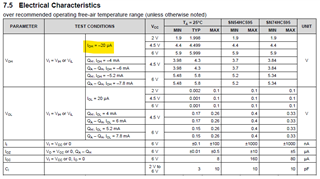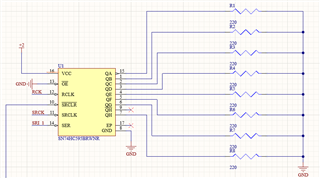Other Parts Discussed in Thread: SN74LV595A, SN74AUC244, SN74LVC541A
Hi good evening,
We tested the SN74HC595N for a VCC of 2V and were not able to get consistent current consumption per the datasheet.

We used a load resistor of 220 Ohm and got a voltage drop of approx. 1 V. We suspect this voltage drop is too large and suspect there is some internal resistance.
So the following questions are:
1. How large is the internal resistance of the Q_A-H outputs?
2. What test condition was used to get the -20 uA current draw.
3. Why are we seeing a large voltage drop?
Please use the schematic below for reference, thank you.



